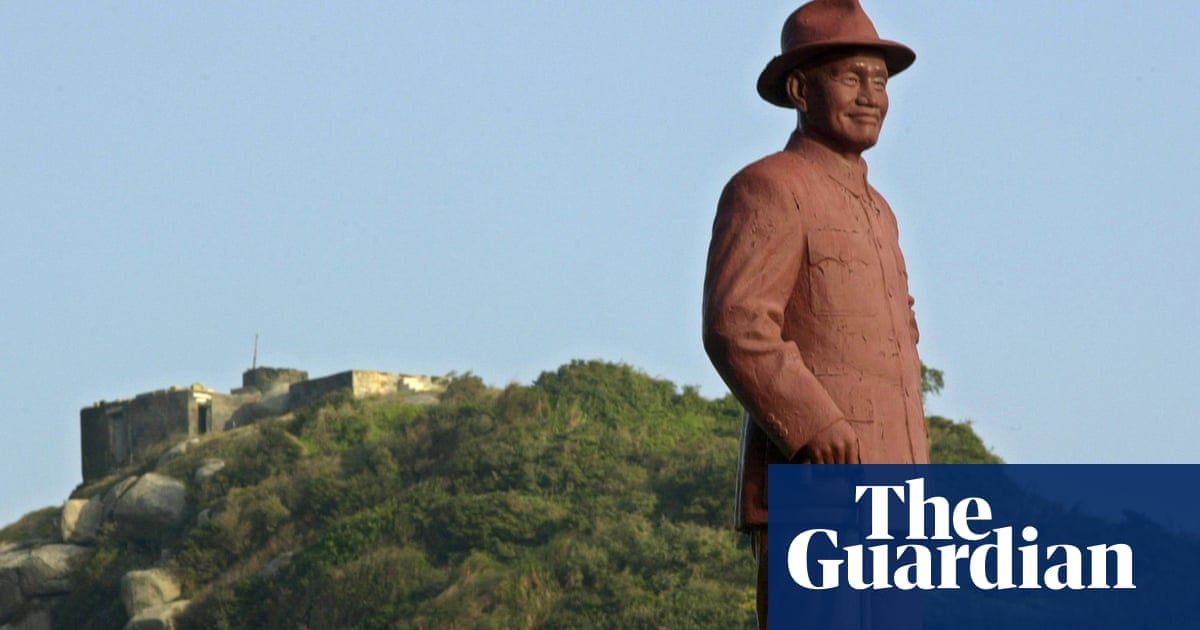Taiwan’s government has pledged to work faster in response to calls to remove almost 800 statues of Chiang Kai-shek, the Chinese military dictator who ruled the island for decades under martial law, but whose legacy remains a point of contentious debate.
In 2018 the government established a transitional justice committee to investigate the rule of the former generalissimo, who was president of the Republic of China (ROC) – in China and then in Taiwan – until his death in 1975. Among its recommendations was to remove the thousands of statues from public spaces.
Speaking to Taiwan’s legislature on Monday, cabinet official Shih Pu said the ministry of interior would work faster on transitional justice efforts, which include addressing the 760 statues still remaining in public places. The pledge was in response to criticism that the government was not moving fast enough.
Taiwan is dotted with statues of Chiang, and for years government and society has been embroiled in debate over what to do with them, in particular the largest inside Taipei’s Chiang Kai-shek memorial hall. Many have already gone – often moved to a park in northern Taipei, which is now famous for the thousands of Chiang likenesses arranged around the grounds.
On Monday Shih said the military in particular had been slow to take-up subsidies provided as an incentive to remove the statues.
“The defence ministry has said it needs to take into account the military tradition,” Shih told the legislature.
The defence minister last week said it was ROC military tradition to honour Chiang, who had founded its training academies in China and then Taiwan, and that he considered military sites to be private property, the South China Morning Post reported.
The comments came after calls for progress on the stalled decision about a statue of Chiang in Taipei that is more than six metres high and protected by a military police honour guard.
The debate over Chiang’s legacy is largely split along party lines, with the ruling Democratic Progressive Party advocating a move away from ongoing tributes, while Chiang’s KMT Party – now in opposition – accuses them of wanting to erase history.
Chiang’s legacy has long been a point of political contention in Taiwan. At the end of China’s civil war in 1949, Chiang, the KMT and millions of supporters fled to Taiwan in defeat. He established the Republic of China government in exile, and ruled Taiwan’s population under a brutal martial law for decades until his death in 1975, when power was transferred to his son. By the end of martial law in 1987 as many as 140,000 people were estimated to have been imprisoned and another 3,000 to 4,000 executed for actual or perceived opposition to the KMT.
But some in Taiwan say that legacy must be weighed against Chiang’s successes, noting that he also oversaw Taiwan’s path to economic prosperity, fought against the Communists and the Japanese, and founded Taiwan’s military academies. The KMT also still exists as a major political party.
The DPP has faced accusations of seeking to “de-sinicise” Taiwan in pushing to end memorialisation of Chiang. The party holds a pro-Taiwan sovereignty position, in contrast to the KMT’s continuing embrace of Taiwan’s historical and cultural ties with China. The KMT has also expressed opposition to the transitional justice commission, and its adverse findings against the party.
Hsu Yu-chien, the KMT’s assistant director of international affairs, said Taiwan was a diverse society and the DPP should not be “imposing [its] ideology”.
“We believe it’s very important for the current government to contemplate more on the various groups of people’s historic memory.”

